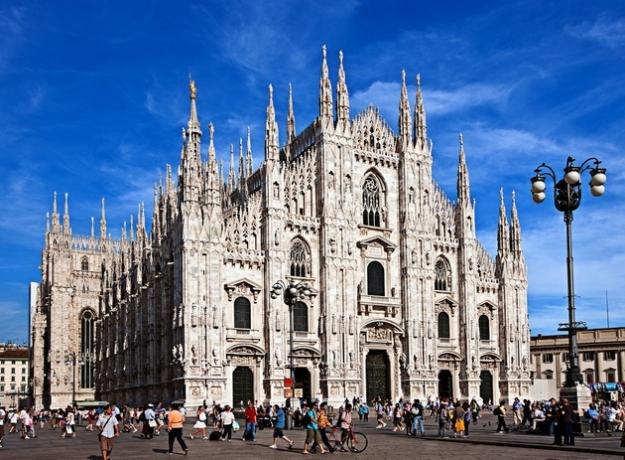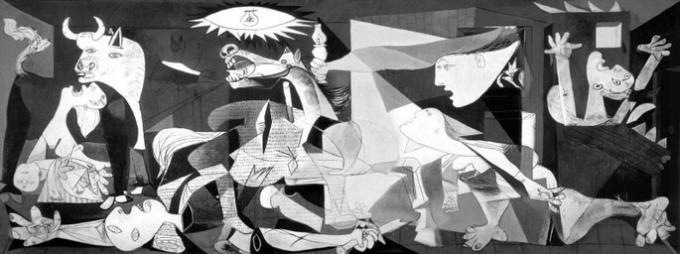THE ArtModern it is the set of artistic expressions that emerged in Europe at the end of the 19th century and lasted until the middle of the 20th century.
It especially covers architecture, sculpture, literature and painting.
In Brazil, this artistic trend has been consolidated with the Modern Art Week which took place in 1922 at the Municipal Theater in the city of São Paulo.
It is considered that modern art had its decline with the end of World War II, giving way to other artistic currents of contemporary or postmodern art.
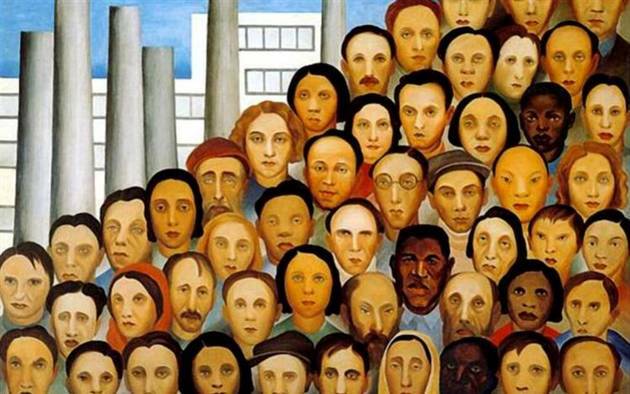
Main Features of Modern Art
Modern art's main characteristic is the break with current standards. This aspect is mainly due to its historical moment.
It happened in a period of great technological achievements (such as the invention of photography and the cinema), in addition to the Industrial Revolution, World War I and later World War II World.
Thus, art is also transformed and begins to play an increasingly challenging role, expressing in some way the uncertainties and dilemmas of contemporaneity.
This artistic expression radically transformed the field of arts by breaking with formalisms, reaching even the grammatical structures in the literary field.
Its main features are:
- rejection of academicism
- Informality
- Freedom of expression
- relative score
- Approximation of popular and colloquial language
- Deformed figures and illogical scenes
- Abandoning the representation of shapes in a realistic way
- Arbitrary use of colors
- urbanism
- humor, irreverence
- strangeness
Top Artists of Modernism
This was a period of great cultural effervescence in which many artists were able to express themselves in a totally innovative way.
European modernist artists
See some great names in the plastic arts of the modernist period in Europe.
- Wassily Kandinsky (1866-1944)
- Pablo Picasso (1881-1973)
- Georges Braque (1882-1963)
- Edward Munch (1863-1944)
- Henri Matisse (1869-1954)
- Piet Mondrian (1872-1974)
- Ernst Kirchner (1880-1938)
- Fernand Léger (1881-1955)
- Giorgio de Chirico (1888-1978)
- Salvador Dali (1904-1989)
- Joan Miró (1893-1983)
- Marc Chagall (1887-1985)
- Umberto Boccioni (1882-1916)
Brazilian modernist artists
Infected by the European vanguards, artists in Brazil developed their art in a bolder way.
However, they were the target of criticism given the shock caused to the public. Many people were offended by the new proposals.
The main exponents of modern art in the country were:
- AtLiterature: Mário de Andrade (1893-1945), Oswald de Andrade (1890-1954), Menotti Del Picchia (1892-1988), Plínio Salgado (1895-1975), Sérgio Milliet (1898-1966).
- AtPaintingandat theDesign: Anita Malfatti (1889-1964), John Graz (1891-1980), Oswaldo Goeldi (1895-1961), Yan de Almeida Prado (1898-1991), Tarsila do Amaral (1886-1973)
- AtSculpture: Hildegardo Leão Veloso (1899-1966), Victor Brecheret (1894-1955) and Wilhelm Haarberg (1891-1986).
- AtArchitecture: Georg Przyrembel (1885-1956).
Read too:
- Modernism in Brazil
- Modern Art Week
- Modernism: all about movement in literature and the arts
- Most important artistic movements of the 20th century
Main Movements of Modern Art
In order to create a new artistic trend, several movements emerged in Europe, among which we highlight:
Expressionism
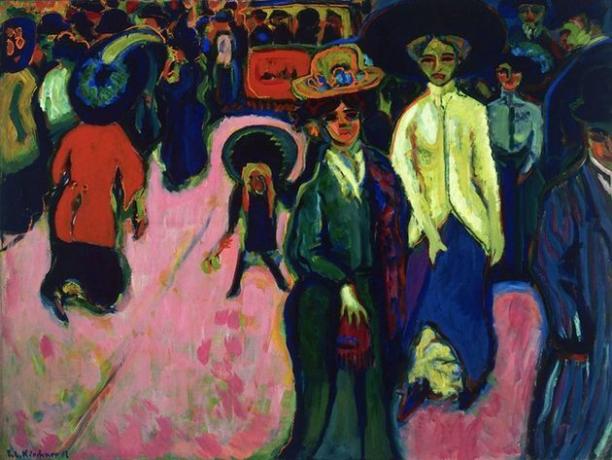
This artistic movement is among the first representatives of the historical avant-gardes and perhaps the first to focus on subjective aspects.
The current takes place in opposition to the impressionist movement, which was more concerned with the effects of lights and colors.
In expressionism, the main characteristic is the representation of feelings and emotions, seeking to express the anxieties and psychological universe of society at the beginning of the 20th century.
Fauvism
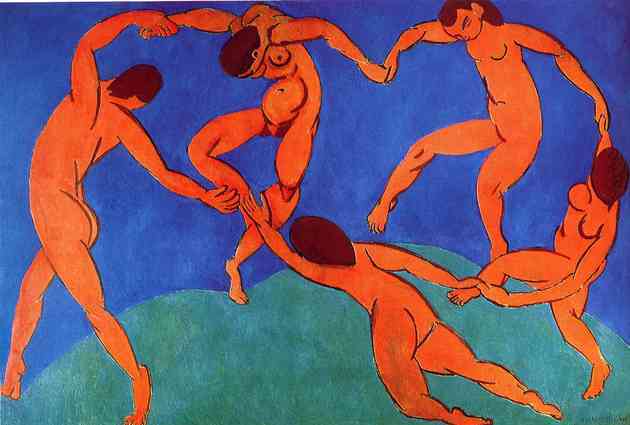
The main characteristics of the Fauve movement are the use of pure colors and the simplification of forms.
Artists created figures only by suggesting the shapes, without representing them realistically, and they used the paints without mixing them and creating gradients.
This current was named "Fauvist" after an exhibition held in Paris in 1905. The painters were called by critics as fauves, which in Portuguese means "beasts". This name came because of the intense and arbitrary use of colors.
Cubism

Cubism can be considered the first artistic movement to be characterized by the incorporation of industrial urban imagery in its works.
It was characterized, especially, by the geometrization of shapes, basically modeled by cubes and cylinders.
Cubists also sought to portray objects and people in all their angles, as if they were "open." In this way, they abandon the notion of perspective and third dimension, so sought after by Renaissance painters.
abstractionism
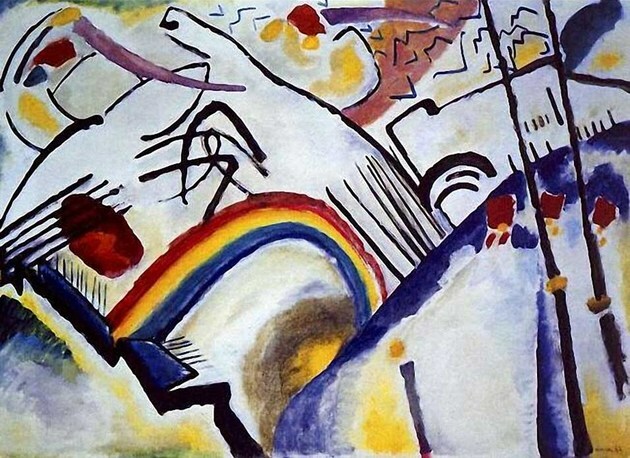
In abstract art, what stands out is the absence of a direct relationship between the portrayed forms and the realistic forms of a being or object.
Here, artists explore colors, shapes, lines, textures, contrasts and other non-pictorial elements.
The Russian artist Wassily Kandinsky can be considered one of the forerunners of modern abstract painting.
futurism
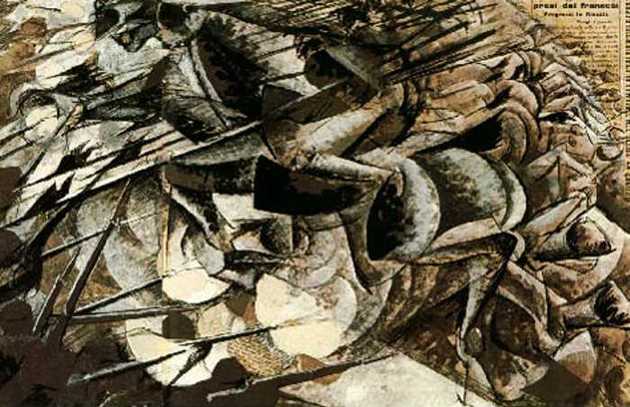
Futurism in the plastic arts was an offshoot of trends in early 20th century literature and was heavily influenced by the Futuristic Manifesto (1909), created by writer Filippo Tommaso Marinetti.
It was characterized by the valorization of industrialism, acceleration and technology, which surpassed the speed of natural movement. Such movement is related to the industrial revolution that was underway.
Surrealism and Dadaism
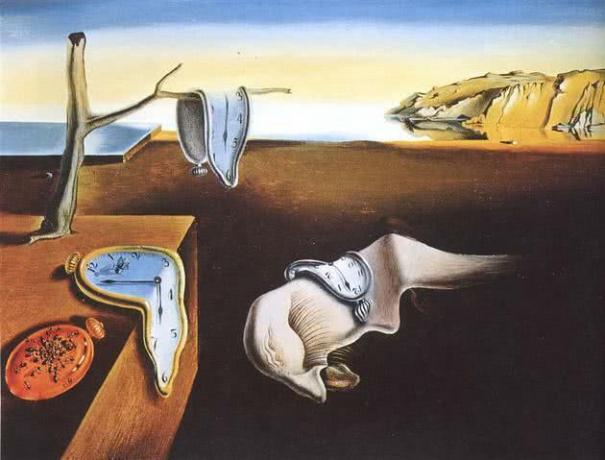
These vanguards emerged as a reaction to the rationalism and materialism of Western society and also as a critique of the First World War (1914-1918).
In the case of Dadaism, the choice of name was made by randomly opening a dictionary and the word that emerged was Dada, which in French means "horse" in children's language. The word didn't matter, because in a world taken over by the irrationalism of war, art also "lost its meaning".
From this artistic line, the Surrealism, idealized by writer André Breton (1896-1966). This form of art valued fantasy, madness, the oneiric universe and the artists' impulse, giving way to the manifestations of the human unconscious.
Concretism
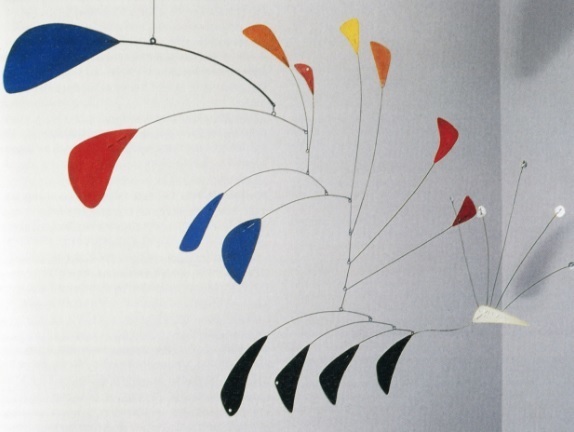
O Concretism it was an avant-garde movement aimed at creating a new language through geometric figures. The artists of this current sought to cause sensations of movement in the public when looking at the works.
Thus, in literature, its central characteristic was the enhancement of visual and sound content. In the plastic arts, he stood out for the use of abstract forms.
Entrance Exam Exercises on Modern Art
1. (Unifesp/2019)
This artistic movement flourished in the mid-twentieth century and was based on the imagination of consumerism and popular culture. It was seen as a reaction to abstract expressionism, as its practitioners reintroduced figurative images into the plastic repertoire and made use of banal themes.
(Ian Chilvers (org.). Oxford Dictionary of Art, 2007. Adapted.)
A representative work of the artistic movement portrayed in the text is reproduced in:
The)

B)

ç)
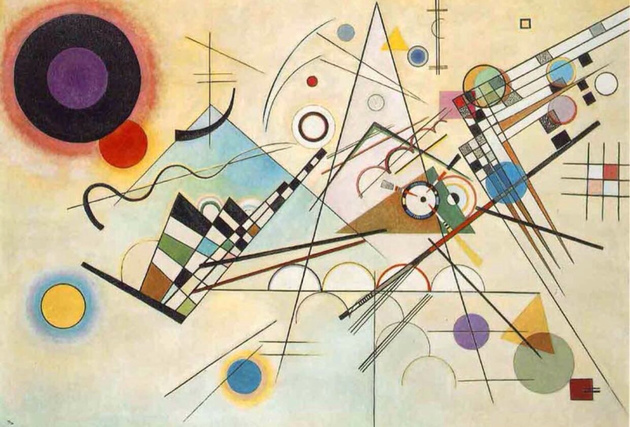
d)

and)
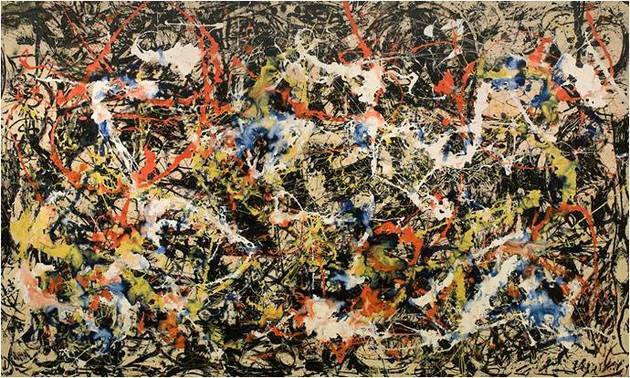
The correct answer is alternative D.
That's because it exhibits a work of Pop-art, avant-garde that emerged in the US around the 60s. This movement sought to "popularize" art and used elements of mass communication, such as comic books, cinema and advertising.
The work in alternative A is part of the surrealist movement, which valued fantasy, the universe of dreams and madness. Furthermore, it was a movement against the idea of consumerism and materialism. Alternative B also features a work from this period.
Kandinsky's painting, shown in alternative C, belongs to abstractionism, precisely the avant-garde that is being placed in the text as opposition to the correct alternative, as is Pollock's canvas in the alternative E.
2. (UEG/2017)

News from Spain
To returning ships
marked by black travel,
to the men who return in them
with scars on the body
or mutilated body,
I ask for news from Spain.
[...]
Nobody gives them. The silence
go up a thousand fathoms and close
among the hardest substances.
Hirto wall silence,
of cloth muffling mouth,
stone crushing branches,
it's dry and dirty silence
in which it is heard leaking
like at the bottom of the mine
a thick red broth.
[...]
tired of vain questions,
fed up with contemplation,
I wanted to do the poem
not a flower: a bomb
and with this bomb break
the wall that surrounds Spain.
(ANDRADE, Carlos Drummond)
Both the poem and the painting:
a) are reports of an experience lived on the battlefield.
b) focus on aspects linked to the universe of fantasy and dreams.
c) depict scenes whose referents are the horrors of war.
d) reveal a subjective and individualistic concern.
e) denote a desire for escapism and denial of reality on the part of the artist.
The correct alternative is c) they portray scenes whose referents are the horrors of war.
in painting Guernica, Pablo Picasso sought to emphasize the death and despair that plagued Spain during the Spanish Civil War, led by dictator Francisco Franco.
The poet Carlos Drummond de Andrade, in his poem "News from Spain", it also addresses the theme of the barbarities of the Spanish war and the bitter silence that surrounds these dark episodes.
3. (Unifor/2018)

The Brazilian artist's painting uses aesthetic elements from one of the European Vanguards, namely:
a) realism
b) surrealism
c) cubism
d) expressionism
e) Dadaism
The correct alternative is c) cubism.
The artist from Ceará, Aldemir Martins, produced a work that was highly influenced by the avant-garde movements of Fauvism and Cubism. On the screen shown, it is possible to perceive the Cubist influences, with simplified lines and valuing the two-dimensionality and use of geometric shapes.
Also check out this selection of questions that we have separated for you to test your knowledge: Exercises on European Vanguards.


